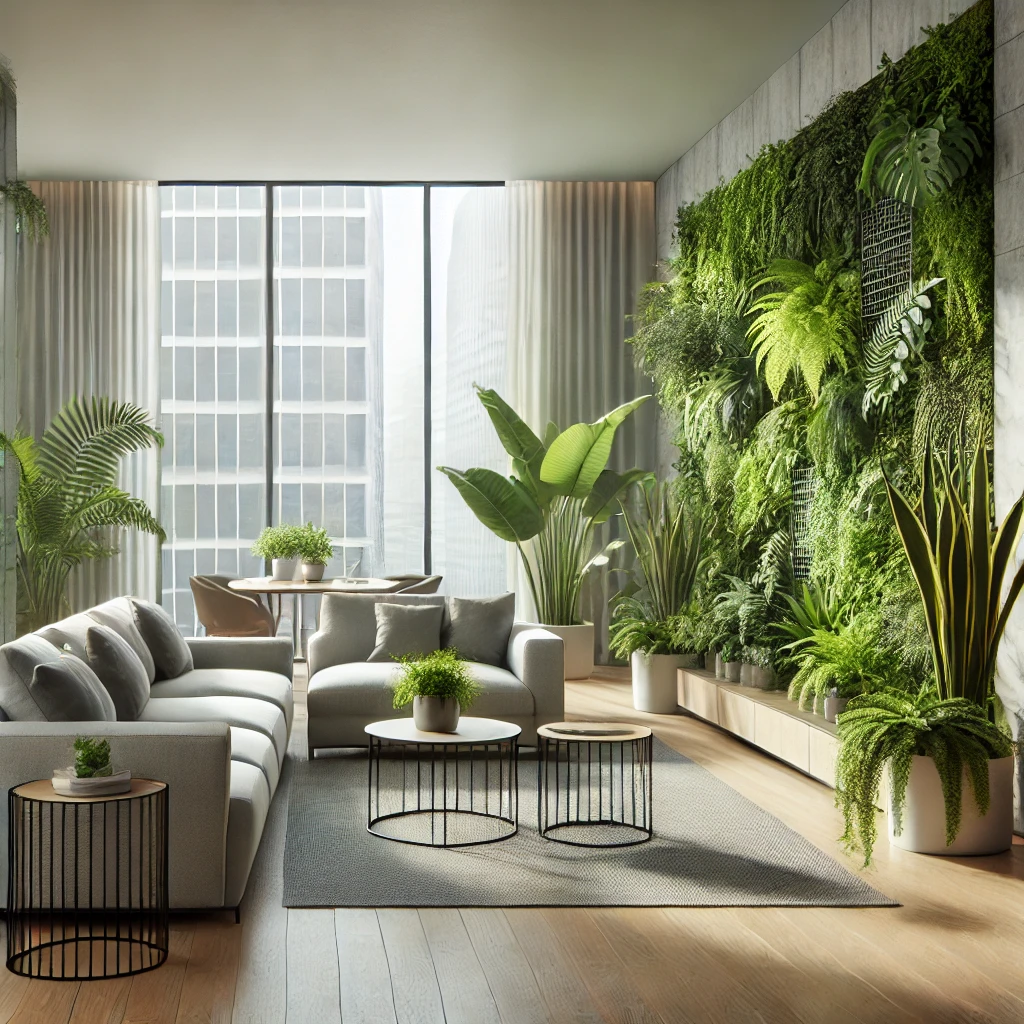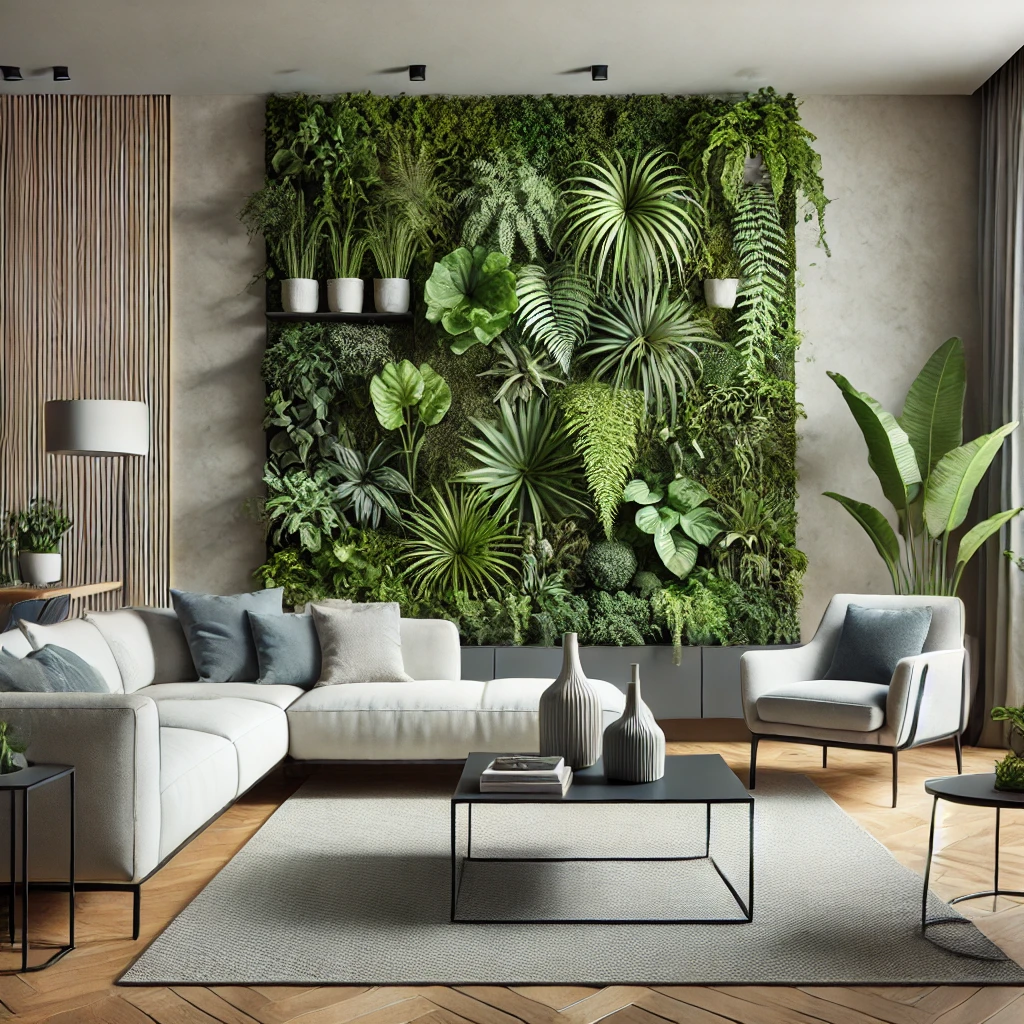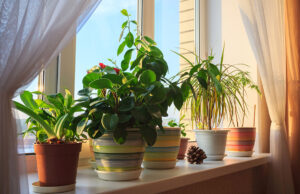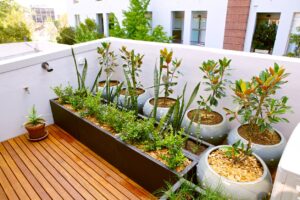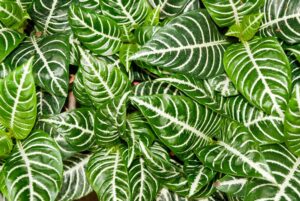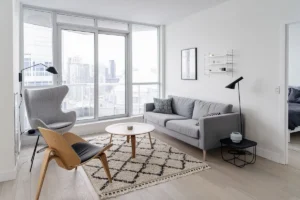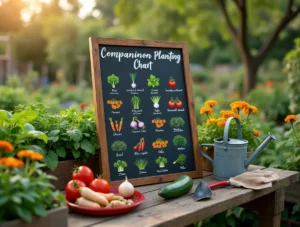Creating an indoor living wall—also known as a vertical garden—is a fantastic way to bring nature indoors, especially in spaces where floor space is limited. These green walls not only enhance the aesthetic appeal of your home but also offer numerous environmental and health benefits. They improve air quality, boost mental well-being, and create a calming atmosphere in any room. Whether you’re living in a compact apartment or a spacious home, an indoor living wall can transform your space into a lush, vibrant sanctuary.
This guide will take you through the fundamentals of designing your own indoor living wall, from understanding the concept and benefits to selecting the best plants for your vertical garden.
On This Page
What is a living wall?
Living walls, also known as vertical gardens, are simply gardens that grow vertically along walls, whether indoors or outdoors. They can be as straightforward as a few hanging pots or as elaborate as entire walls covered in various plants, and they frequently have complex structures or modular panels supporting them. These walls are not only visually appealing, but they also provide a sustainable means of incorporating greenery into urban environments with limited horizontal space.
Vertical gardens are more than just a trendy design element; they are a practical way to incorporate more plants into spaces that would not otherwise accommodate traditional potted plants. This makes them especially popular in cities, where space is often limited.
History and Evolution of Vertical Gardens
The concept of vertical gardening isn’t new. It dates back to ancient civilizations, with one of the earliest examples being the Hanging Gardens of Babylon, one of the Seven Wonders of the Ancient World. These gardens were believed to be an extraordinary feat of engineering, with terraced levels of greenery cascading down stone walls.
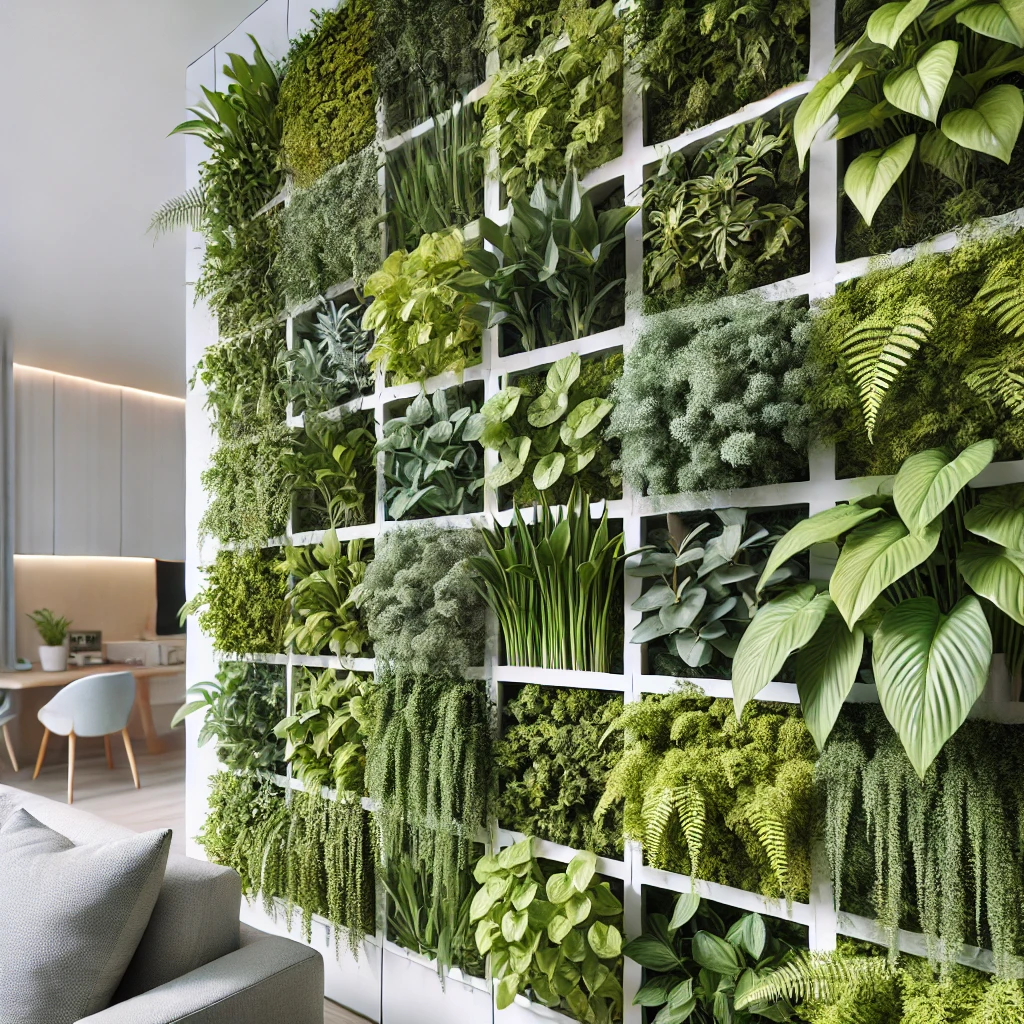
Fast forward to the modern era, and vertical gardens have evolved into a key element of sustainable architecture. Today, they are integrated into both exterior and interior design, helping to improve air quality, reduce noise pollution, and create natural insulation. With the growing interest in sustainable living, the transition of vertical gardens from exterior to interior spaces has been a natural progression, offering homeowners an innovative way to bring the benefits of greenery into their homes.
Benefits of Indoor Plant Walls
Indoor living walls offer a multitude of benefits that go beyond their aesthetic appeal. From health improvements to practical advantages, here’s why you should consider incorporating a vertical garden into your indoor space.
Aesthetic Appeal
A living wall can dramatically enhance the look of any indoor space. Unlike traditional potted plants that occupy floor or shelf space, a vertical garden transforms an entire wall into a living piece of art. The lush greenery and varying textures create a dynamic focal point that can soften the hard lines of modern interiors, adding warmth and a sense of tranquility.
Living walls are incredibly versatile in design. Whether your style is minimalist, rustic, or eclectic, there’s a living wall configuration that can complement your aesthetic. For example, a minimalist space might benefit from a sleek, symmetrical design using plants with clean lines, such as snake plants or ZZ plants. In contrast, a more rustic or bohemian setting might incorporate a variety of ferns and trailing plants to create a wild, untamed look.
Health Benefits
Beyond their visual appeal, living walls significantly contribute to indoor air quality and overall well-being. Plants naturally filter toxins from the air, absorbing pollutants like formaldehyde and benzene while releasing oxygen. This process not only purifies the air but also makes your home healthier, especially in areas with poor outdoor air quality.
The presence of greenery indoors has been shown to reduce stress, lower blood pressure, and improve concentration. According to a study published in the Journal of Physiological Anthropology, interaction with indoor plants can reduce physiological and psychological stress. This makes living walls particularly beneficial in spaces where you want to create a calm and relaxing environment, such as bedrooms, offices, or living rooms.
Furthermore, plants can help regulate indoor humidity. Through transpiration, they release moisture into the air, which can be particularly beneficial during the dry winter months. This natural humidity control can help prevent dry skin and respiratory issues, making your home more comfortable.
Space Efficiency
For those living in small apartments or homes with limited space, an indoor plant wall offers a practical solution to incorporating greenery without sacrificing precious floor space. Vertical gardens make use of vertical real estate, allowing you to grow a variety of plants in a compact area.
This space-saving feature is especially valuable in urban environments, where every square inch counts. Whether you’re creating a small herb garden in the kitchen or a full-scale green wall in the living room, a vertical garden maximizes your use of space while still providing all the benefits of traditional gardening.
Additionally, living walls can serve as natural room dividers, adding both functionality and beauty to open-plan living areas. This dual-purpose approach allows you to create distinct zones within a space while maintaining a cohesive, natural aesthetic.
Best Plants for Indoor Living Walls
Choosing the right plants is crucial to the success of your indoor living wall. The plants you select should not only thrive in the conditions of your indoor environment but also enhance the overall look and feel of your vertical garden. Here’s a guide to some of the best plants for different types of indoor environments, whether you’re looking for low-maintenance options, plants for humid areas, or even edible varieties.
Low-Maintenance Plants
If you’re new to indoor gardening or prefer a low-effort approach, selecting plants that require minimal care is essential. Here are some top choices for a low-maintenance living wall:
- Pothos (Epipremnum aureum): Pothos is a versatile and resilient plant that’s perfect for beginners. It thrives in low to bright indirect light and only needs watering when the soil feels dry. Pothos is also known for its air-purifying qualities, making it a practical choice for any living space.
- Philodendron (Philodendron spp.): Similar to pothos, philodendrons are easy to care for and adaptable to various indoor conditions. They can tolerate low light and irregular watering, making them ideal for those with busy lifestyles. Their heart-shaped leaves add a soft, decorative touch to any living wall.
- Snake Plant (Sansevieria trifasciata): The snake plant is known for its striking, upright leaves and its ability to thrive in low-light conditions. It’s also incredibly drought-tolerant, requiring very little water to stay healthy. In addition to its low-maintenance needs, the snake plant is an excellent air purifier, making it a smart choice for bedrooms and offices.
- ZZ Plant (Zamioculcas zamiifolia): The ZZ plant is almost indestructible, making it perfect for those who might not have a green thumb. It can survive in low light and requires infrequent watering, making it one of the most low-maintenance plants available. Its glossy, dark green leaves bring a bold, modern look to your living wall.
High-Humidity Plants
If you’re planning to install your living wall in a humid area of your home, such as a bathroom or kitchen, choosing plants that thrive in moisture-rich environments is key. Here are some excellent options:
- Ferns (Nephrolepis exaltata, Asplenium nidus): Ferns are classic choices for high-humidity environments. Their feathery fronds add a soft, lush texture to your living wall, creating a serene, tropical atmosphere. Boston fern and bird’s nest fern are particularly popular for indoor gardens, as they thrive in warm, moist conditions.
- Orchids (Phalaenopsis spp.): Orchids are a bit more challenging to care for but reward you with stunning flowers. They thrive in bright, indirect light and high humidity, making them ideal for bathrooms. Orchids can add a touch of exotic beauty to your living wall, transforming it into a luxurious, spa-like feature.
- Spider Plant (Chlorophytum comosum): Spider plants are adaptable and easy to grow, making them a great addition to any living wall. They prefer bright, indirect light and regular watering. Their arching leaves and offshoots create a dynamic, full appearance that works well in high-humidity areas.
- Maidenhair Fern (Adiantum spp.): Maidenhair ferns are delicate and elegant, with light, feathery fronds that require consistent moisture to thrive. They do best in a high-humidity environment, making them perfect for bathrooms or areas with frequent use of humidifiers.
Edible Plants
If you want your indoor living wall to be more than just decorative, consider incorporating edible plants. This can turn your vertical garden into a functional and sustainable source of fresh herbs and vegetables. Here are some great options:
- Basil (Ocimum basilicum): Basil is a versatile herb that thrives in warm, sunny spots. It’s perfect for a kitchen living wall, where you can easily snip fresh leaves for cooking. Basil requires well-drained soil and regular watering to stay healthy, making it an excellent choice for culinary enthusiasts.
- Mint (Mentha spp.): Mint is incredibly easy to grow and spreads quickly, making it ideal for creating a lush, fragrant living wall. It thrives in moist soil and can tolerate some shade, making it adaptable to various indoor environments. Plus, fresh mint leaves are a wonderful addition to teas, salads, and desserts.
- Lettuce (Lactuca sativa): Lettuce grows well in shallow soil, making it ideal for vertical gardens. It prefers cooler temperatures and partial shade, which can easily be provided indoors. With regular watering, you can enjoy fresh salads right from your living room.
- Thyme (Thymus vulgaris): Thyme is a hardy herb that prefers full sun and well-drained soil. Its small size and creeping growth habit make it a good fit for vertical gardens. Like basil, thyme is perfect for a kitchen garden, providing fresh seasoning for your dishes.
These plant choices not only add greenery and beauty to your indoor space but also offer practical benefits, such as air purification and fresh produce, making your living wall both functional and decorative.
Designing an indoor living wall is a creative and rewarding process that brings the beauty and benefits of nature into your home. By carefully planning your wall, selecting the right plants, and understanding the unique needs of each species, you can create a stunning vertical garden that thrives in your indoor environment. Whether you’re looking to enhance your space aesthetically, improve your health, or simply make better use of limited space, a living wall is an excellent choice for any home.
Ready to start building and installing your indoor living wall? Check out the next section of this series, Building and Installing Your Indoor Living Wall: A Step-by-Step Guide.
